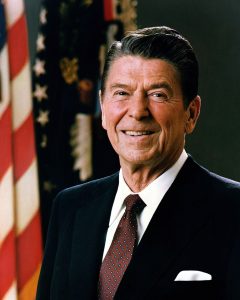This time, Inamori* spoke about the above motto in Kyocera philosophy.
What Inamori said is quoted with “”.
“ Despite the overwhelming gap in financial resources and technological capabilities compared to major manufacturers, our tiny company kept receiving only the most challenging orders— ones even the big players had already turned down.
Naturally, saying, ‘Well, that’s impossible for us,’ would get us nowhere.
A small business like ours, lacking both capital and technology, could never survive if we responded to every inquiry with ‘We can’t do that.’
Knowing that the company would not survive unless we found a way, I often forced myself to respond, ‘Let’s see what we can do. Depending on how we approach it, it might be possible.’
But researchers would then say, ‘If it’s only a possibility, then never mind,’ and end the conversation. So, I had to summon even more courage and say, ‘Yes, we can do it.’
We were desperate for orders. With no clear path forward, I still said, ‘Yes, we can do it,’ and accepted trial orders. To make matters worse, I even promised, ‘We’ll deliver the prototype in three months.’
Of course, I knew full well that, with our current capabilities, we couldn’t do it. But I told my employees, ‘Over the next three months, through repeated experimentation, we will improve and gain the ability to do it.’ ”

In the Kyocera Philosophy, there is a principle that encourages us to view our abilities in the future progressive tense—that is, not based on what we can do now, but on what we will be able to do.
Inamori explains how this principle came to be included in the philosophy, describing the real-life experiences that led to its formation.
Normally, when faced with a difficult challenge, we tend to say, “That’s impossible,” or “There’s no way we can do that.” But in most cases, this reaction stems from our own preconceived notions—we decide it’s impossible before even trying.
So, how can we make what seems impossible become possible? I’ve taken the time to reflect on this, and I believe the key lies in these three points:
1. Act as if you are already a capable person
2. Truly believe that a path will open
3. Explore flexible and creative solutions
Let me explain each one in detail.
1. Act as if you are already a capable person
“ One of my subordinates once said to me, ‘Mr. Inamori, how can you go and tell clients “we can do it” when we clearly can’t? How can you take orders like that?’
To be honest, that stung. It felt like he was accusing me of twisting words—of using sophistry, or even outright lying, just to get an order. ”
→ Former U.S. President Ronald Reagan was once a Hollywood actor.
That means he probably didn’t have deep or extensive knowledge or experience in politics, economics, or diplomacy when he first took office.
After Reagan became president, during a press conference, a journalist asked him a question about space policy.
At that moment, President Reagan responded firmly and said,
“That’s not the kind of question a president should be answering.”
Even through the TV screen, the person recounting the story said that the reporter looked foolish, while Reagan appeared calm, dignified, and truly presidential.

When we closely observe people who are truly capable—those who are seen as great—we can vicariously experience what they’ve been through. By sensing their energy, by tuning into their spirit, it sometimes feels as if their essence begins to live within us.
To make the impossible possible may, in fact, mean to “act” as if you were a genius—to imitate them, to embody their presence until it becomes real.
2. Truly believe that a path will open
“ When you are truly determined to realize your dreams—when you continue making relentless efforts with that unwavering mindset—a path will surely open up.
That is why, even when I had no capital , no technology, and nothing at all, I pushed forward by relying on one thing: the mindset of seeing my abilities in the future progressive tense—focusing not on what I could do now, but on what I would become capable of doing.
This belief became our sole asset. And it carried us all the way to building a corporate group that today generates around 700 billion JPY in annual revenue with a 10% pre-tax profit margin. “
→ We modern people tend to believe only in what we can see with our eyes.
But what Mr. Inamori is talking about here, I believe, is the power of invisible energy—what we might call *ki*, or pure intention.
To hold a burning desire in your heart.
To work harder than anyone else.
To stay positive and forward-looking at all times, with dreams, hope, and a sincere heart…
These are among the principles found in Mr. Inamori’s “Twelve Management Guidelines.”
If such a mindset becomes deeply rooted in your subconscious, then the impossible becomes possible. To think wholeheartedly, to exhaust every human effort, and then wait patiently for divine inspiration—this way of living, this state of heart, is what Mr. Inamori is once again sharing with us here.

3. Explore flexible and creative solutions
” When conflicts between labor and management remain unresolved, and neither side engages in honest, open-hearted dialogue, labor relations inevitably become mired in tension and discord.
Seeing how often such situations occurred in society, I came to believe that the relationship between labor and management should not be one of opposition, but of shared awareness and responsibility—as co-managers of the enterprise.
To me, the inability to foster unity between labor and management stemmed from a failure on both sides to truly understand each other, due to the vast difference in their positions. ”
→ In the Kyocera Philosophy, under the principle “Ensure Everyone Is Aware of the Goal,” Mr. Inamori speaks about this very point.
If we hold fixed assumptions—such as “this is what management should be,” or “employees are supposed to think this way,” or “this is just how labor-management relations work”—we close ourselves off from the kind of flexible thinking Mr. Inamori encourages here.
To approach things without preconceived notions, without clinging to specific answers or rigid forms—to keep our hearts clear so that we can perceive the essence of a situation—this mindset can be cultivated through the practice of Aikido.
The essence of Aikido lies in the soft acceptance of the other, and in the pursuit of harmony (*wa*)—not in overpowering the opponent with force or dominance. Such displays of strength are not always the best way to resolve conflict.
This mindset—of flexibility and openness—can serve us well, not only in business management but in many aspects of our lives.

Rather than being trapped by conventional thinking or unconscious bias, I believe we must value flexibility, gentleness, and sensitivity. These qualities allow us to find solutions even in unprecedented situations.
And so, in practicing the idea of “seeing our abilities in the future progressive,” I believe the first step we can take is to act as if we already possess the capabilities we seek; to believe, deep in our subconscious, that a path will surely open; and to pursue harmony through flexible thinking and action. This, I believe, is the way of life and thought that truly matters.
* Mr. Kazuo Inamori, the founder of Kyocera, KDDI (one of the top tele communication companies in Japan) and the top of revitalization project of JAL. As a well-known Japanese entrepreneur, he has been sharing his experiences and management know-how with managements of small to middle companies in Japan.
Further queries or doubts, please email to ytomizuka@abrilsjp.com
News Letter subscription is here









